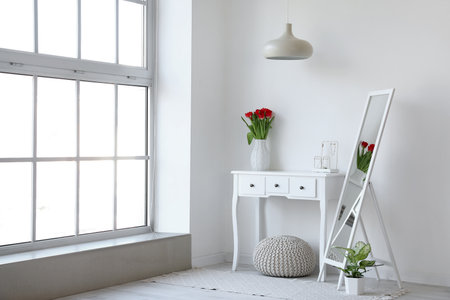Introduction to Eco-Friendly Paint in the UK
Eco-friendly paint is rapidly gaining popularity across the UK, reflecting a nationwide shift towards sustainable living and responsible choices. As British homeowners and businesses alike become more conscious of their environmental impact, the demand for paints that are low in volatile organic compounds (VOCs), non-toxic, and produced with ethical sourcing is on the rise. This movement isn’t just about reducing carbon footprints or adhering to regulations—it’s also about creating healthier indoor environments and supporting brands that share these values. Whether it’s a heritage property in the Cotswolds or a modern office space in London, eco-friendly paint options are shaping how Britons approach renovation and decoration projects. In this context, household names like Farrow & Ball and Dulux are responding with innovative ranges designed to meet both aesthetic expectations and environmental standards, making it easier for consumers to make ethical choices without compromising on quality or style.
2. What Makes a Paint Eco-Friendly?
When choosing eco-friendly paint in the UK, it’s essential to understand what truly makes a product environmentally conscious. With heightened awareness about sustainability, both Farrow & Ball and Dulux have adapted their offerings to meet increasing demand for greener choices. But what sets an eco-friendly paint apart? Key features include low volatile organic compound (VOC) content, use of sustainable ingredients, and adherence to responsible manufacturing practices that align with UK regulations.
Key Eco-Friendly Features Explained
Low VOC levels are crucial in reducing indoor air pollution and minimising health risks for occupants. The UK has specific standards governing VOC limits in decorative paints, ensuring products labelled as low-VOC comply with stringent requirements. Beyond VOCs, the choice of ingredients matters—eco-friendly paints often utilise renewable resources, plant-based binders, or recycled materials instead of petrochemicals. Responsible manufacturing is another hallmark, where brands commit to minimising waste, using renewable energy sources, and reducing their overall carbon footprint.
Comparison of Eco-Friendly Criteria
| Feature | Farrow & Ball | Dulux |
|---|---|---|
| Low VOC Content | Yes – Water-based formulas with minimal VOCs, compliant with UK/EU standards | Yes – ‘Dulux Trade’ and ‘Dulux Easycare’ ranges offer low-VOC options |
| Sustainable Ingredients | Natural pigments and responsibly sourced binders used in select ranges | Increasing use of recycled content and biobased components in selected lines |
| Responsible Manufacturing | Manufactured in Dorset using renewable electricity; waste reduction initiatives in place | Commitment to carbon reduction across UK factories; recycling schemes for leftover paint |
| Cruelty-Free/Animal Testing Policy | No animal testing; some vegan-friendly products available | No animal testing; expanding vegan options in certain ranges |
The Importance of UK Standards
The UK government enforces strict guidelines on the environmental impact of consumer products, including paints. Choosing paints that are certified by recognised bodies such as the British Coatings Federation or carry the EU Ecolabel ensures you’re supporting responsible production while protecting your home environment. Ultimately, understanding these key eco-friendly attributes empowers consumers to make ethical choices between brands like Farrow & Ball and Dulux.

3. Farrow & Ball: Ethical Credentials and Product Range
Farrow & Ball has established itself as a leading name in the eco-friendly paint sector across the UK, and it continues to set high standards for sustainability and ethical practice. For British consumers who care deeply about environmental impact, Farrow & Ball’s initiatives provide genuine reassurance. The company’s water-based paints are low in VOCs (volatile organic compounds), which means reduced indoor air pollution and a healthier living environment. This commitment to cleaner formulations is independently recognised, with many of their products carrying the coveted BS EN 71-3:2019 (Toy Safety) accreditation, ensuring suitability for use in family homes, nurseries, and schools.
On top of that, Farrow & Ball is diligent about responsible sourcing. Their pigments are carefully chosen for minimal environmental harm, and packaging is fully recyclable—aligning with UK recycling standards. The brand also demonstrates transparency, regularly publishing information about its supply chain ethics and carbon footprint.
The unique appeal of Farrow & Ball lies not just in its ethical credentials but also in its distinctive colour palette and finishes tailored to British tastes. With an extensive range inspired by the UK’s landscapes, heritage buildings, and interior trends, each paint offers depth and character that sets it apart from mass-market alternatives. For property owners seeking a truly sustainable yet stylish option for their decorating or maintenance projects, Farrow & Ball remains a favourite—marrying eco-conscious production with timeless British design sensibilities.
4. Dulux: Sustainable Practices and Accessibility
When discussing eco-friendly paint choices in the UK, Dulux emerges as a household name renowned for blending sustainability with accessibility. Dulux’s approach to environmental responsibility is shaped by both global standards and local expectations, making it a practical option for British homeowners who want their decorating projects to be greener without compromising on performance or price.
Dulux’s Commitment to Environmental Standards
Dulux is part of AkzoNobel, a company that has made significant strides towards reducing its environmental impact. The brand is committed to meeting stringent UK and EU regulations regarding VOC (Volatile Organic Compounds) content, ensuring their paints are safer for both indoor air quality and the broader environment. Many Dulux products hold certifications such as the EU Ecolabel and comply with BREEAM standards, which are highly regarded in the UK construction and renovation sectors.
Key Sustainability Initiatives by Dulux
| Sustainability Initiative | Description |
|---|---|
| Recycled Packaging | Dulux uses containers made from post-consumer recycled plastic, reducing landfill waste. |
| Low-VOC Formulas | Their main ranges, including Dulux Trade and Easycare, feature low-VOC or zero-VOC options, minimising harmful emissions during application and drying. |
| Can Recycling Programme | Through the Dulux Can Recycling Scheme, customers can return empty paint cans to designated centres across the UK for responsible disposal or recycling. |
| Water-Based Paints | A significant shift towards water-based paints has reduced reliance on solvents, supporting both user health and environmental goals. |
| Energy-Efficient Manufacturing | Their manufacturing plants in the UK have implemented energy-saving technologies and practices to cut carbon emissions. |
Tailored Product Range for UK Homeowners
Dulux recognises that British homes require paints suited to diverse architectural styles, weather conditions, and lifestyle needs. Their extensive product portfolio covers everything from classic emulsions for period properties to durable exterior finishes capable of withstanding the UK’s famously unpredictable climate. With easy access through nationwide DIY chains and local decorators’ merchants, Dulux makes sustainable decorating accessible for everyone—from city flats to rural cottages.
Why Choose Dulux for Eco-Friendly Decorating?
- Widespread Availability: Products are easy to find across the UK, including eco-focused ranges like Dulux Trade Diamond Matt and Heritage collections.
- Professional Endorsement: Many British decorators trust Dulux not just for its performance but also its commitment to greener practices.
- Affordability: Compared to some boutique brands, Dulux provides eco-conscious options at price points suitable for most budgets.
Dulux demonstrates that sustainability need not be exclusive or expensive. By embedding ethical production processes into mainstream paint lines and offering practical recycling schemes, they empower UK homeowners to make responsible choices—without sacrificing style or substance.
5. Comparing Farrow & Ball and Dulux: Practical Considerations
Performance in Real-World Conditions
When choosing eco-friendly paint in the UK, understanding how Farrow & Ball and Dulux perform under typical British conditions is key. Farrow & Ball is well-known for its rich pigmentation and depth of colour, giving walls a luxurious finish that is particularly striking in period homes or heritage renovations. Dulux, on the other hand, offers a more consistent coverage with fewer coats needed, especially with their trade ranges designed for high-traffic areas. Both brands now offer low-VOC and water-based formulas suitable for modern eco-conscious households.
Ease of Application
For professional decorators and DIY enthusiasts alike, application matters. Dulux paints are generally easier to apply, with a smoother flow and faster drying times. They tend to be more forgiving on uneven surfaces and require less meticulous preparation, which can save time on larger jobs. Farrow & Ball paints have a thicker consistency and may need extra care during application—using recommended brushes and rollers will yield better results. However, many users find that achieving the signature Farrow & Ball finish is worth the additional effort.
Durability and Longevity
UK homes face unique challenges from damp weather and fluctuating temperatures. Dulux’s formulation excels in durability, offering scuff-resistant finishes ideal for hallways, kitchens, and children’s rooms. Their weather-shield exterior range is a popular choice for protecting brickwork and woodwork against the elements. While Farrow & Ball paints are durable indoors, they may require more frequent touch-ups in high-wear areas unless you opt for their Modern Emulsion or Estate Eggshell ranges specifically designed for resilience.
Cost Comparison
Budget considerations are essential when selecting paint for home improvement projects. Farrow & Ball sits at the premium end of the market; its price reflects both the quality of ingredients and its ethical manufacturing processes. For those renovating smaller spaces or seeking a boutique finish, this investment can be justified. Dulux is generally more affordable per litre and offers larger pack sizes, making it cost-effective for extensive redecorating or when covering large surface areas.
Suitability Across Different UK Environments
From coastal cottages exposed to salty air to urban flats battling condensation, paint needs vary throughout the UK. Dulux’s extensive range includes specialised products catering to everything from mould resistance to weatherproofing—an advantage for properties in challenging environments. Farrow & Ball’s palette is tailored towards classic British interiors but can also suit contemporary spaces looking for a subtle, sophisticated look. Ultimately, both brands offer options compatible with most UK building materials and climate demands; the final choice depends on your specific requirements for style, sustainability, and practical performance.
6. Choosing the Right Eco-Friendly Paint for Your Project
Selecting the most suitable eco-friendly paint for your next renovation or maintenance job in the UK involves more than simply picking a shade you fancy. Expert recommendations take into account several key factors: project size, location, finish requirements, and your own ethical priorities.
Project Size and Coverage
For larger projects, such as whole-room redecorations or exterior facades, Dulux’s wider availability and competitive pricing often make it the practical choice. Their eco-friendly ranges, like Dulux Trade Vinyl Matt or Easycare, offer excellent coverage per litre, helping you stay within budget while reducing waste. Conversely, Farrow & Ball’s high-pigment paints are ideal for feature walls or smaller spaces where depth of colour and artisanal finish are paramount.
Location and Environmental Considerations
If you’re painting in a space with limited ventilation—think Victorian terraces or basement conversions—low-VOC formulas are vital. Both Farrow & Ball and Dulux offer low-odour options compliant with UK regulations, but Farrow & Ball’s water-based emulsions are especially favoured for their minimal impact on indoor air quality. For coastal homes or exposed exteriors where weather resistance is crucial, Dulux Weathershield EcoSure provides robust durability tailored to the British climate.
Finish Required: Aesthetic vs Practicality
Do you need a washable finish for busy hallways, or are you after a sophisticated matte look for a drawing room? Farrow & Ball is renowned for its luxurious finishes and unique depth of colour—perfect for period properties or statement walls. On the other hand, Dulux excels in offering a variety of sheens and easy-clean finishes that suit high-traffic areas typical in family homes or rental properties.
Aligning with Your Ethical Priorities
For those who prioritise sustainability at every step, Farrow & Ball’s commitment to recyclable packaging, responsibly sourced materials, and local manufacturing in Dorset may tip the balance. If supporting brands with strong social initiatives or wider community outreach is important, Dulux’s broad engagement across the UK construction sector could be more appealing. Always check for recognised accreditations like EU Ecolabel or BREEAM compliance when making your decision.
Ultimately, the right eco-friendly paint is one that meets both your practical needs and your ethical standards—whether you’re after long-lasting performance for a busy household or an artisanal touch that supports sustainable British craftsmanship.
7. Conclusion: Supporting a Greener Future in the UK
In summary, choosing eco-friendly paint in the UK is more than just a trend; it is a practical step towards preserving the environment while enhancing your home. Our review of Farrow & Ball and Dulux reveals that both brands offer sustainable options, yet differ in their approach to environmental responsibility. Farrow & Ball stands out for its natural ingredients and commitment to minimal VOCs, catering to those seeking traditional British quality with a green ethos. Dulux, on the other hand, provides broader accessibility with its certified low-VOC ranges and widespread availability across the UK.
For British consumers, making an informed choice means considering not only colour and finish but also the ethical footprint of each tin of paint. By opting for products with clear eco-credentials—such as water-based formulations, recyclable packaging, and responsible manufacturing—you directly support the shift towards greener homes and communities.
Ultimately, every purchase contributes to shaping demand for sustainable practices within the paint industry. Whether you are redecorating a classic Victorian terrace or a modern flat, your decision can help set higher standards for environmental care across the UK. Let us all do our part by selecting paints that balance beauty, durability, and ecological responsibility—ensuring that our living spaces reflect not just personal style but also a shared commitment to a cleaner, greener future.


